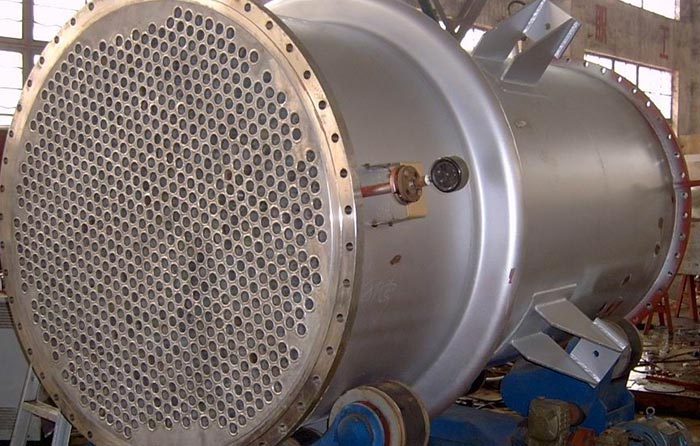Solutions to Common Problems When Purchasing Clad Steel Plates
Clad steel plates are essential materials utilized across various industries, including shipbuilding, petrochemical facilities, and construction, as they combine the robustness of carbon steel with enhanced corrosion resistance from other metals. These plates serve as a cost-effective option for applications that demand both durability and defense against adverse environments. However, acquiring clad steel plates can lead to several challenges that might disrupt project schedules and budgets. In this article, we will examine common obstacles faced by customers and present practical solutions to help you navigate the purchasing process successfully.
Common Issues When Purchasing Clad Steel Plates
1. Incorrect Selection of Cladding Material
Choosing the wrong cladding material is a prevalent issue when acquiring clad steel plates. The cladding material, which may include stainless steel, nickel alloys, or copper, is pivotal in determining the clad steel's performance. The optimal choice hinges on criteria such as corrosion resistance, heat tolerance, and mechanical strength, which differ markedly across materials.
For instance, stainless steel cladding is ideal for environments exposed to high corrosion risks, while nickel alloys are preferable for extreme temperatures or chemical exposure. To prevent this mistake, evaluating the specific usage conditions of the clad steel, such as chemical exposure, heat, or pressure, is crucial for selecting the right material.
2. Misunderstanding Bonding Processes
Another significant factor impacting the performance of clad steel plates is the bonding process used to adhere the cladding to the base steel. Various bonding methods include explosive bonding, hot rolling, and weld cladding, each possessing unique advantages and limitations based on the application.
For example, explosive bonding creates a robust bond but may not be suitable for thinner plates or complex shapes. Hot rolling yields a homogeneous bond and is typically employed for thicker plates but necessitates particular conditions to avert defects. To mitigate potential issues, it is advisable to verify with your supplier the bonding method applicable to your order, ensuring it corresponds with your project's requirements.
3. Price Variations and Budget Management
Price discrepancies among suppliers pose another challenge when procuring clad steel plates. The prices of these materials can fluctuate notably based on factors like cladding thickness, cladding material type, and production methods. For instance, clad plates featuring thicker cladding or those manufactured via intricate techniques like explosive bonding are generally more expensive.
To manage your budget pragmatically, obtaining comprehensive quotes from suppliers that delineate costs by material, thickness, and methodology is essential. Such transparency enables you to grasp the value of the materials you are purchasing and prevents overspending on excess specifications.

4. Verifying Quality and Specifications
Confirming that the clad steel sheets comply with the necessary specifications for your project is imperative. However, this can be daunting, as not every supplier offers clear documentation or certifications validating material quality. In the absence of proper verification, you might receive plates that fall short of your expectations or requirements, leading to project delays or failures.
To mitigate this concern, always request certifications, test reports, and material specifications prior to placing an order. Reputable suppliers will provide essential documentation, including mechanical properties, corrosion resistance data, and chemical composition reports, ensuring that the plates meet the requisite standards for your project.
Case Studies: Real-World Solutions
An illustrative example involves a manufacturing firm that encountered challenges with their clad steel plates during a significant refinery project. The ordered plates were intended to withstand high temperatures and aggressive chemicals, yet they fell short of performance standards due to inadequate bonding. After reassessing their purchase, they collaborated with a different supplier who utilized the appropriate bonding technique and provided exhaustive material certifications. This adjustment enabled them to meet project deadlines and enhance the safety and endurance of the refinery.
In another scenario, a shipbuilding business faced corrosion complications on their newly constructed vessels. Initially, they had opted for a lower-cost clad steel plate featuring stainless steel cladding; however, the material did not offer the necessary resistance to marine corrosion. After consulting with the supplier, they transitioned to a higher-quality nickel alloy cladding, significantly boosting the longevity and performance of the ships in seawater environments.
How to Avoid Common Pitfalls When Purchasing Clad Steel Plates
1. Understand Your Project’s Specific Needs
Before making a purchase, comprehending your project's precise requirements is vital. Consider environmental factors such as exposure to chemicals, elevated temperatures, or mechanical stress. By assessing the conditions under which the clad steel plates will be utilized, you can select the appropriate material and bonding process, ensuring optimal performance and durability.
2. Partner with Reputable Suppliers
Collaborating with trustworthy suppliers is essential in ensuring the quality and reliability of your clad steel plates. Seek suppliers who have a proven track record and favorable customer feedback. They should furnish detailed product documentation, including certifications, test reports, and material specifications, which ensures the plates will meet the necessary standards for your application.
3. Request Samples or Test Reports
Before committing to a significant order, it is advisable to request samples or test reports to verify the material’s performance. These reports should provide insights into the mechanical properties, corrosion resistance, and chemical composition of the steel. Verifying these aspects guarantees that the clad steel plates will meet performance expectations in your specific application.
4. Review Price Breakdown and Specifications
While comparing prices, ensure that the supplier presents a clear cost breakdown based on material type, cladding thickness, bonding method, and other pertinent factors. This transparency will empower you to make an informed choice and evade unnecessary expenses.
Next Steps
If you are prepared to procure high-quality clad steel plates for your project, feel free to reach out to our team. We offer expert guidance to assist you in selecting the most suitable materials for your application. Our knowledgeable professionals will ensure you receive detailed documentation and top-quality products tailored to your specific requirements. Contact us today to commence your journey!
- Previous: None
- Next: None



